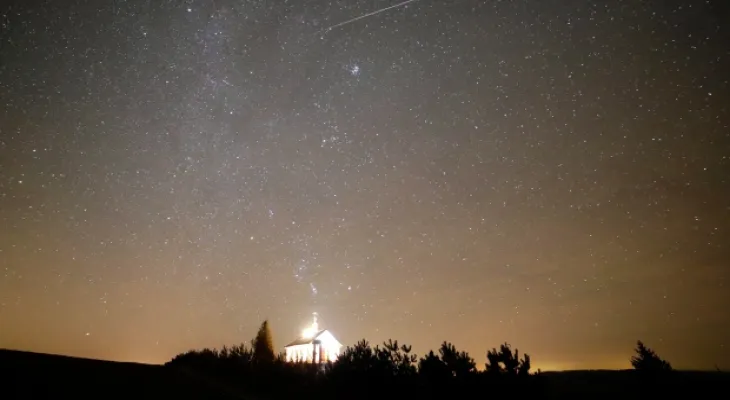Search here
Newspaper
Search here

Arab Canada News
News

Published: December 13, 2023
Bright and spectacular colors are expected to flow across the sky on Wednesday night as the Geminid meteor showers reach their annual peak.
NASA considers the Geminids to be one of the best and most reliable annual meteor showers.
The night will start on Wednesday and continue until early Thursday morning, with a peak expected at 2 a.m., according to Dalia Pappas, a researcher and programmer in astronomy and space science at the Ontario Science Center.
Pappas said, "It has been ongoing for a few weeks, starting in mid-November, but the peak peak is at 2 a.m. on December 14."
Under ideal conditions, about 120 meteors are expected to streak across the sky per hour.
The best viewing of the Geminids will be when the sky turns dark and during the early hours of dawn.
Pappas recommends finding a place to stargaze away from the light pollution in Toronto as much as possible.
However, the show will still be available to those living downtown, partly because the Geminids will not compete with the moon, since it is just Wednesday night.
In Toronto, wearing appropriate winter clothing and checking the forecast in advance, hoping for clear skies, is crucial.
Environment Canada expects a partly cloudy evening in Toronto with a 30 percent chance of gusts, dropping to minus 9 degrees Celsius with cold winds, on Wednesday night with sunset on Thursday.
Apart from a hat and gloves, Pappas said no specialized equipment is necessary to see the meteors.
What are the Geminids?
The Geminids first appeared in the mid-19th century at a rate of only 10 or 20 meteors per hour, according to NASA, which has since risen to more than 100 meteors per hour.
Most meteor showers result from a comet passing the sun and leaving a trail of dust behind it, and when the Earth passes through these trails, NASA explains that the dust debris collides with the atmosphere where it disintegrates to form fire streaks in the sky.
However, the Geminid stones are not comets, but asteroids.
Pappas explained that around the same time each year, the Earth passes through a trail of debris from asteroid 3200 Phaethon – which we call the Geminids.
The name comes from the Gemini constellation because the meteors appear to radiate from this constellation in the sky, and NASA notes that the Geminid stones will be visible across the entire night sky, not just from their constellation.
Comments